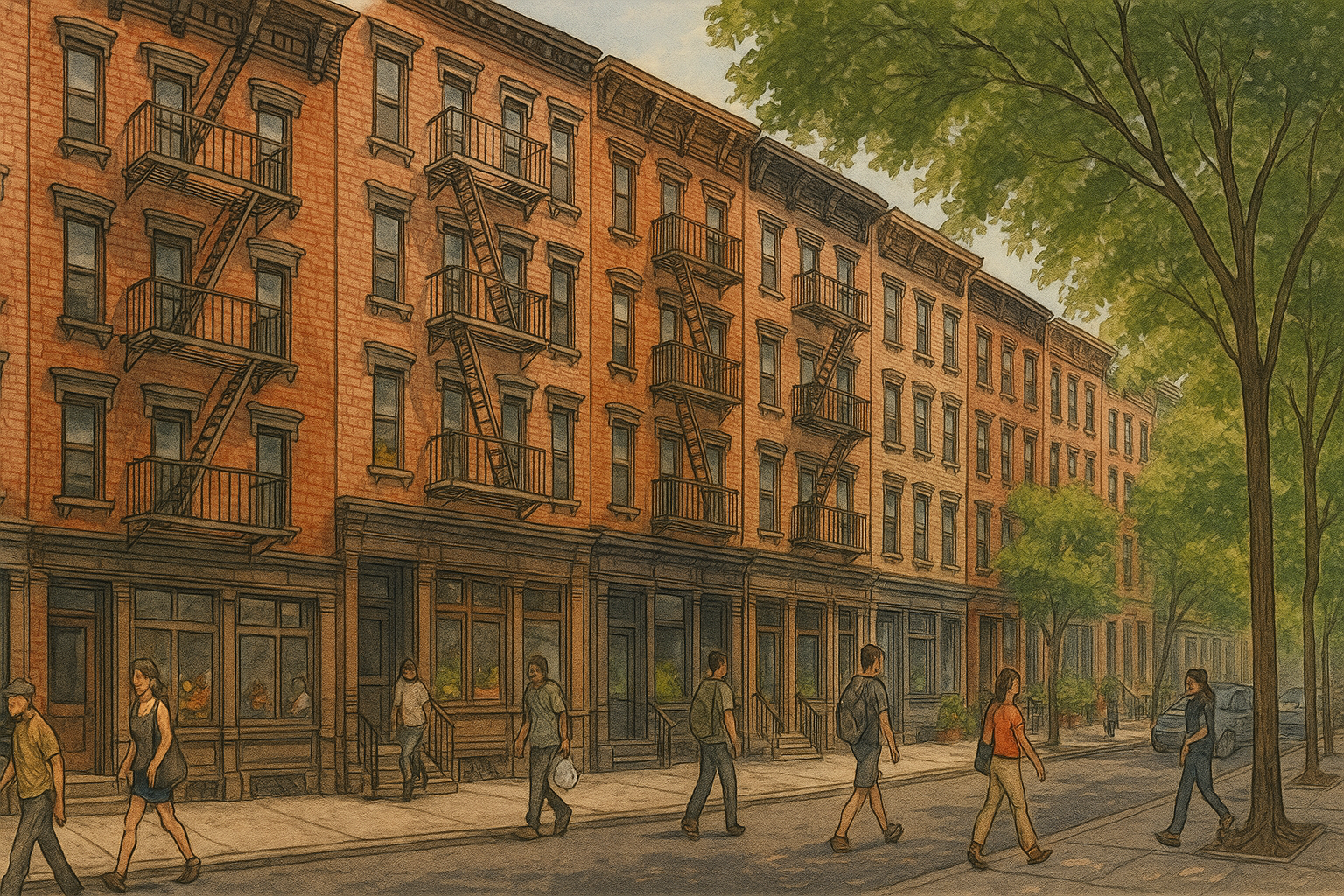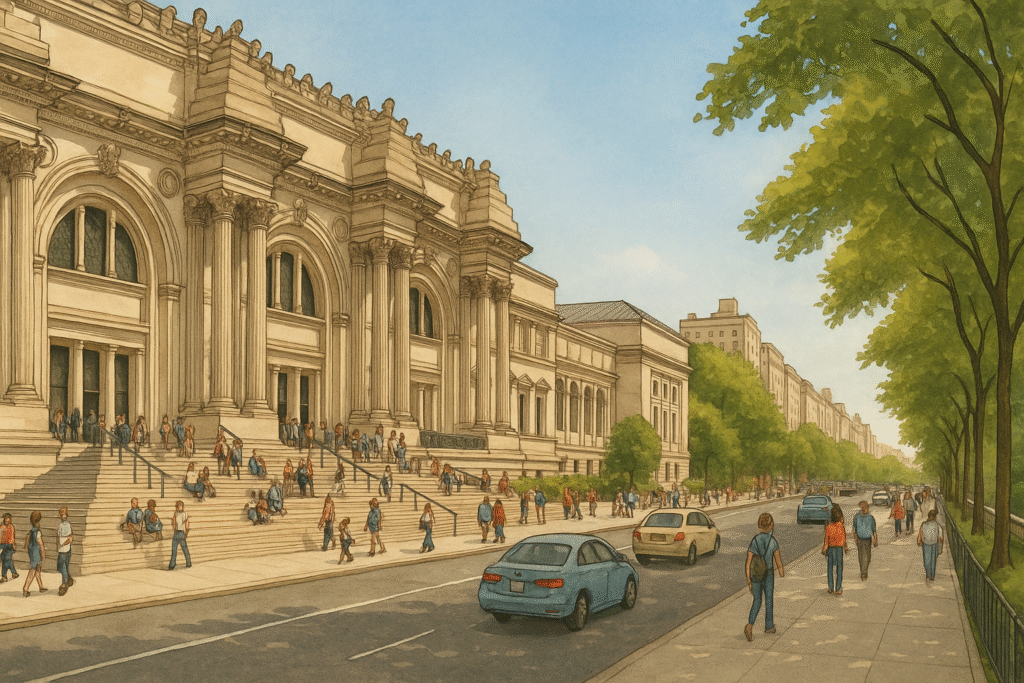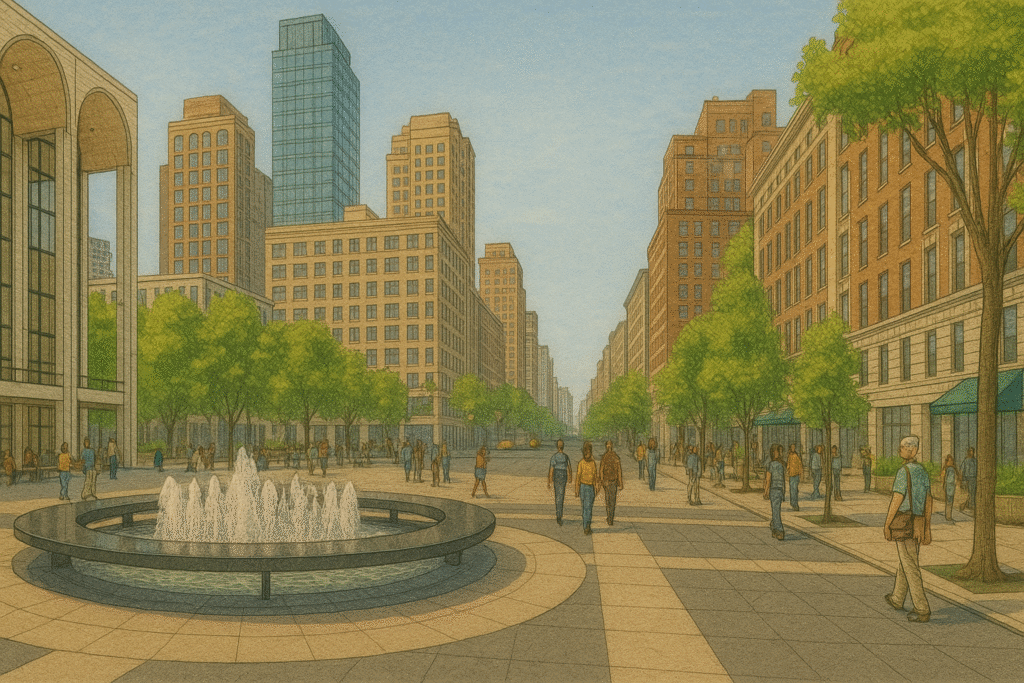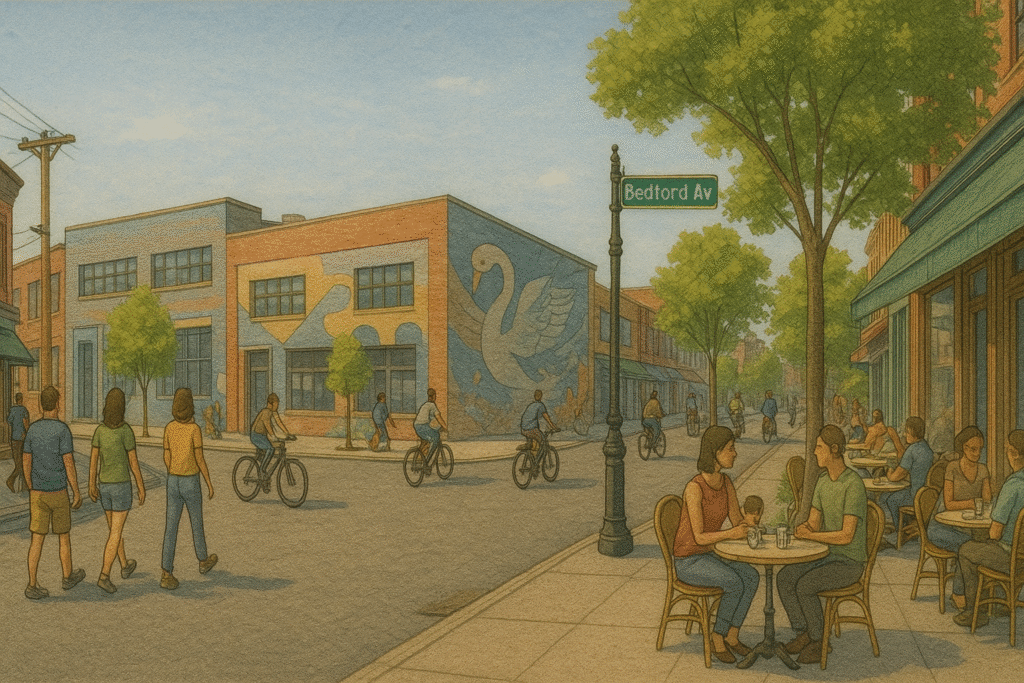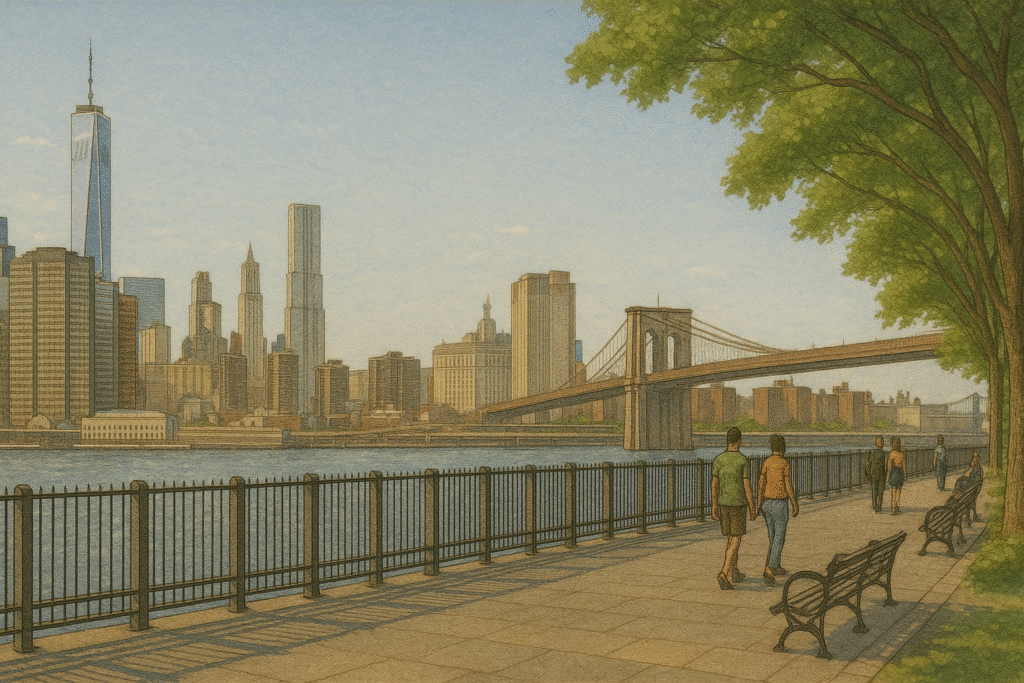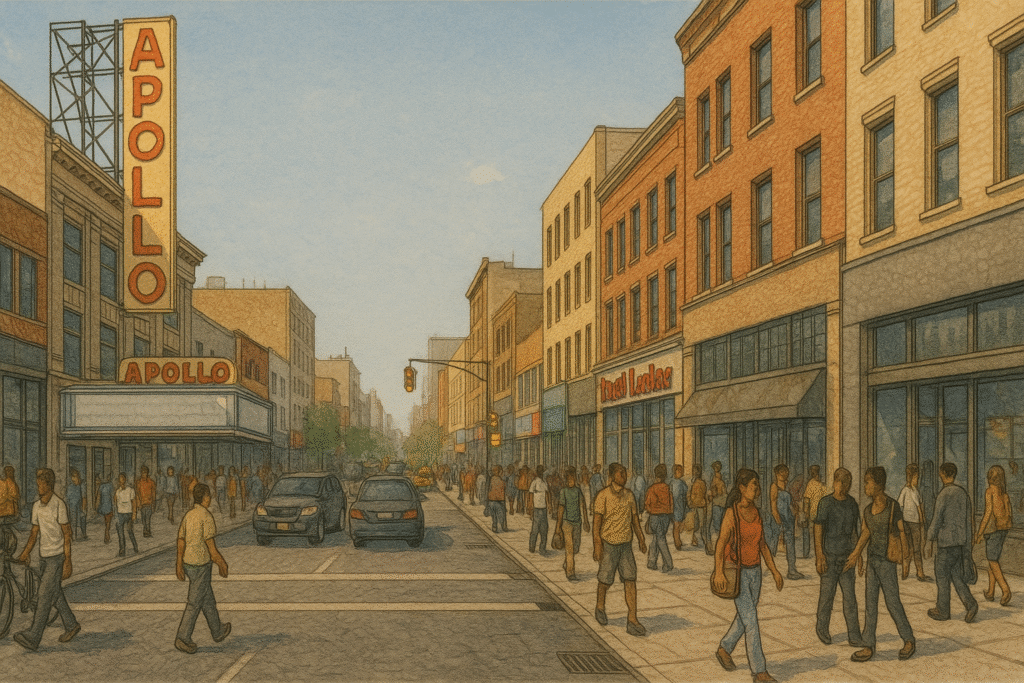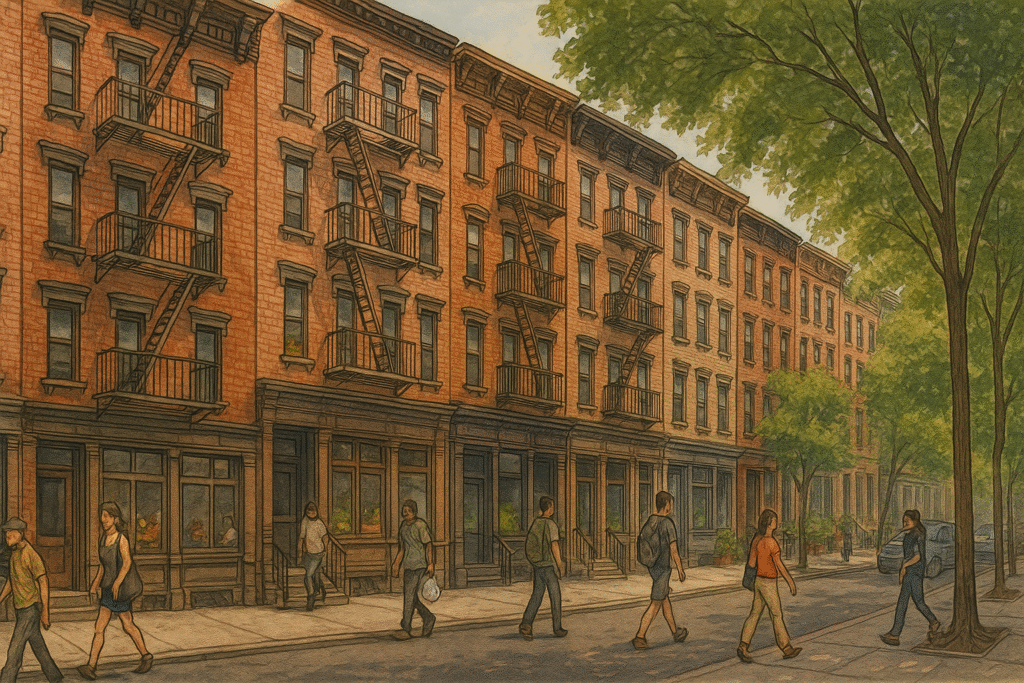This walk explores the East Village, a neighborhood shaped by immigration, cultural movements, and ongoing reinvention. The route begins at Tompkins Square Park, continues west along St. Mark’s Place, turns south toward Second Avenue, and finishes in the streets of Alphabet City near the East River. Along the way, visitors encounter community gardens, historic places of worship, music venues, and long-standing restaurants. The pace is moderate, with frequent opportunities to pause at small parks, storefronts, and cultural landmarks. This itinerary is suited to those interested in street-level history, neighborhood traditions, and the overlap of past and present in a compact urban setting.
Tompkins Square Park and St. Mark’s Place
Begin at Tompkins Square Park, a central gathering space bordered by Avenue A and East 10th Street. The park contains open lawns, playgrounds, and paved walkways shaded by mature trees. Benches line the interior paths, and community events are often held in the open areas. Visitors can enter from multiple gates, each leading toward the park’s central plaza.
From the park’s northern side, walk west along St. Mark’s Place. The sidewalks here are lined with storefronts selling vintage clothing, street food, and music-related merchandise. The buildings are mostly mid- to late-19th-century tenements, with narrow façades and fire escapes running up the front. This short stretch has been a hub for youth culture for decades, and it continues to mix local businesses with newer shops and cafés.
On the corner of St. Mark’s Place and Second Avenue, pass the site of the former Gem Spa, once known for its newsstand and role in countercultural life. The storefront is now closed, but the corner remains a recognizable stop along the street. Continue west toward Second Avenue, where the scale of the buildings increases slightly, and the traffic becomes heavier.
Ukrainian and Jewish Heritage Core
From St. Mark’s Place, turn south on Second Avenue and continue a short distance to St. George Ukrainian Catholic Church. The church’s brick façade and twin towers stand out against the surrounding tenements. Built in the early 20th century, it remains an active parish and cultural anchor for the neighborhood’s Ukrainian community.
A few blocks away on East 6th Street, visit the Ukrainian Museum, which preserves and presents the art, history, and traditions of Ukrainians in the United States. Exhibits include folk costumes, fine art, and archival materials documenting immigration and community life. The museum’s modern building contrasts with the older brick structures nearby.
East 6th Street is also home to several historic synagogues, many housed in narrow buildings that once served as tenement residences. These modest façades often conceal richly detailed interiors that have been preserved or restored. Collectively, they mark the presence of Jewish congregations that flourished here in the early 20th century.
Continue west along East 9th Street to Veselka, a Ukrainian restaurant that has operated in the East Village since 1954. The menu features traditional dishes such as pierogi and borscht, and the dining room serves a mix of long-time residents, visitors, and late-night customers. Its location at the corner of Second Avenue and East 9th Street makes it a busy intersection both day and night.
Avenue A and Alphabet City
From Veselka, head east along East 7th Street toward Avenue A. This stretch passes a mix of older tenements, renovated apartment buildings, and storefronts serving both long-term residents and newer arrivals. Many corners feature small markets, bakeries, or cafés with seating along the sidewalk.
Continue south on Avenue A to the Museum of Reclaimed Urban Space (MoRUS), located in a former squat. The museum documents local activism, the squatter movement, and the creation of community gardens throughout the neighborhood. Exhibits include photographs, protest materials, and maps showing the evolution of nearby lots and buildings.
As you walk deeper into Alphabet City, the streets narrow and traffic becomes lighter. The area is notable for its network of community gardens, many established on formerly vacant lots. These green spaces vary in size and style, with features such as vegetable beds, small trees, and outdoor seating. Murals and mosaic art appear along building walls, reflecting the neighborhood’s tradition of public art.
End the walk by heading east to East River Park. The park offers open fields, walking paths, and views across the river to Brooklyn. From here, visitors can either retrace their steps through Alphabet City or follow the waterfront north toward the Williamsburg Bridge.
This walk through the East Village follows a route shaped by immigration, activism, and cultural reinvention. Landmarks such as St. George Ukrainian Catholic Church, the Ukrainian Museum, and community gardens reveal the persistence of local traditions alongside new uses for familiar spaces. The neighborhood’s compact blocks and varied streetscape create frequent changes in pace and scenery. For visitors interested in how cultural history remains visible in the built environment, this route offers a close look at a community that continues to adapt while maintaining a distinct identity.

The Street Sign
The Street Sign points the way to where things are — the parks, restaurants, museums, and everything else. These guides are built to save you time and energy. Need a plan for an NYC outing? Follow The Street Sign.
